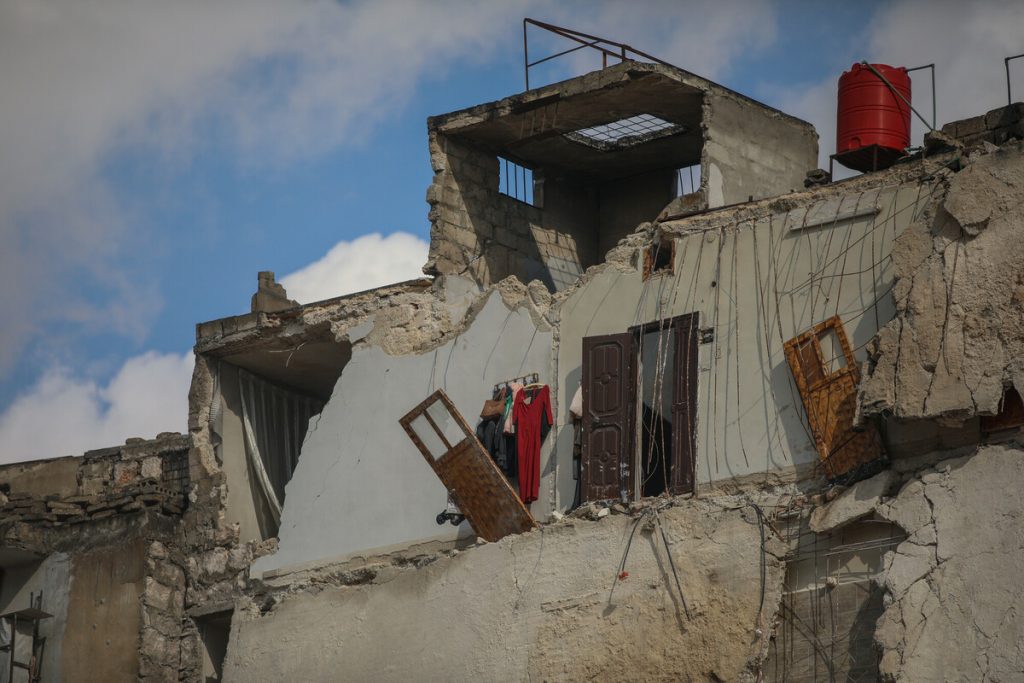Getting water to Zaatari during drought season
Could you cope with just 35 litres of water, the equivalent of one 5 minute shower, a day? On World Humanitarian Day, Alaa Milbes shares the situation in Zaatari refugee camp as the summer heat reaches its height and explains how Oxfam is responding.
Zaatari refugee camp today is dry and dusty, with soaring temperatures. It is home to 81,000 Syrian refugees and now constitutes Jordan’s fourth largest ‘city’. Children, who in their native Syria used to play water games and swim, are now sitting listlessly under the shade to protect themselves from the blistering sun. In Jordan, a country already battling water scarcity, the situation is dire, with refugees relying on aid organizations to provide them with clean water to drink and wash.
Zaatari refugee camp is home to 81,000 Syrian refugees and now constitutes Jordan’s fourth
largest ‘city’
Back home, life was very different: most refugees had substantial water reserves. In pre-conflict Syria, communities enjoyed between 70-145 litres per person per day. In Zaatari, they have had to adjust and make do with just 35 litres per person, per day.
Ahmed, a 60 year-old Syrian refugee with whom Oxfam works, says, “In Syria, water is plentiful, especially in Inkhal, the town we are from. There we took showers a few times a day, kids played with water, and we never thought about water scarcity.”
In the camp, Ahmed’s family has to wait their turn in a weekly schedule of alternate showers, washing clothing, and cleaning their homes as everyone attempts to manage with less.
Water shortages in Zaatari camp are a microcosm of a much larger issue in Jordan caused by a scarcity of water supply and depleting aquifers that affects all those residing in the country. It is also one of the camp’s residents’ top concerns. Service providers have faced challenges adapting distribution mechanisms to the varying needs of camp residents.
In response to water shortages in the camp, Andy Boscoe, Oxfam’s Zaatari Programme Manager, said,
“As Zaatari camp enters its second year of operation, underground aquifers are depleting fast. The settlement of thousands of Syrian refugees in a water-scarce region is putting huge pressure on available water resources. These difficulties affect the most vulnerable residents of the camp who are suffering unfairly.
“Given that water resources are limited and need to be rationed, there is desperate need for improved governance, which will result in a fairer distribution of water, and for funding to build a piped water network thereby reducing wastage during water trucking and providing a more consistent supply.”
Operating in three of the camp’s eight districts, with a total of nearly 25,000 individuals, Oxfam provides water tanks and manages the water supply network, while the Agency for Technical Cooperation and Development (ACTED) provides water trucks which deliver water to camp districts between 1 and 3 times per day.
Oxfam and its partners are laying out plans to create a piped water network in the coming months that will provide Zaatari residents with a more sustainable water source. While the network will not increase the quantity of water supply, it will improve reliability.
Oxfam will also be going street-to-street asking refugees how they want to divide their water between camp WASH blocks and public water tanks. This feedback will be incorporated in new water infrastructure plans.
In the meantime, Syrian refugees are gradually adjusting their water usage habits to adapt to their new context. Ahmed says, “We have had to learn to make do with less and it has been difficult to adjust. It is a process but we’re learning. The aid agencies here have improved the situation and today, access to water is much easier than it was seven months ago when we came.”
Alaa Milbes is Oxfam Great Britain’s Media Officer.
This blog originally appeared at oxfam.org.uk/blogs
Related
- South Sudan, one of the most challenging places to be a humanitarian
- What does it mean to be a humanitarian?
- Controlled arms: Oxfam’s hope for the next World Humanitarian Day

